#hws kuwait
Note
I feel stupid for asking this so im using anon, but how do you draw the hijab? Whenever I try it looks like an egg www
also, Ramadan Mubarak! May Allah bless you
Don’t feel stupid for asking! Drawing is hard no matter what you’re drawing, so don’t be afraid to ask for help^^ But honestly even I feel like the best of my hijabis look a little egg-like, and that’s okay!


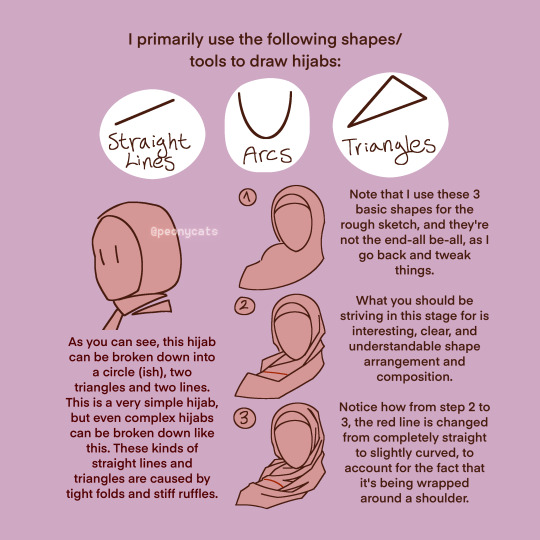


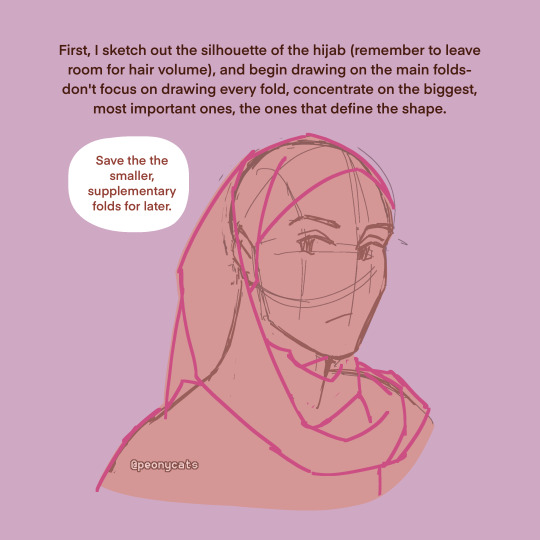





This tutorial is already taking so goddamn long, so I’m just gonna link my coloring and shading tutorial I did a month ago 😭😭

Gosh, I hope what I wrote made sense 😅 But thank you so much for the well wishes! Happy Ramadan (Eid Mubarak at this point WAHHH), and the same to you, may you and your loved ones have many blessings!!
ADDITIONAL REFERENCES
Winchester Meg's Hijab Drawing Tutorial
Souratgar's Hijab Drawing Tutorial
General Tips for Drawing and Shading Fabrics
#hijab#hijab tutorial#hetalia#aph nyo turkey#hws nyo egypt#hws nyo malaysia#hws nyo somalia#hws kuwait#hws nyo indonesia#hws nyo syria#hws nyo saudi arabia#hws nyo jordan#hws iran#aph persia#hws persia#hetalia ocs#historically inaccurate hair is historically inaccurate#AGHHHH THIS TOOK SO LONG!!#originally i didnt plan on drawing nyo indo here but eventually she got promoted to title card#tips#art stuff#aph iran#aph kuwait
18K notes
·
View notes
Text


more ryoko kui inspired busts + covering their awrah ver cause why not lol
#hetalia#hetalia ocs#hws turkey#hws egypt#hws iran#aph egypt#aph turkey#aph iran#hws persia#aph persia#hws libya#hws iraq#hws palestine#hws oman#hws qatar#hws lebanon#hws tunisia#hws sudan#hws jordan#hws morocco#hws kuwait#hws bahrain#hws kurdistan#hws mauritania#hws algeria#hws uae#hws syria#hws mena
34 notes
·
View notes
Text
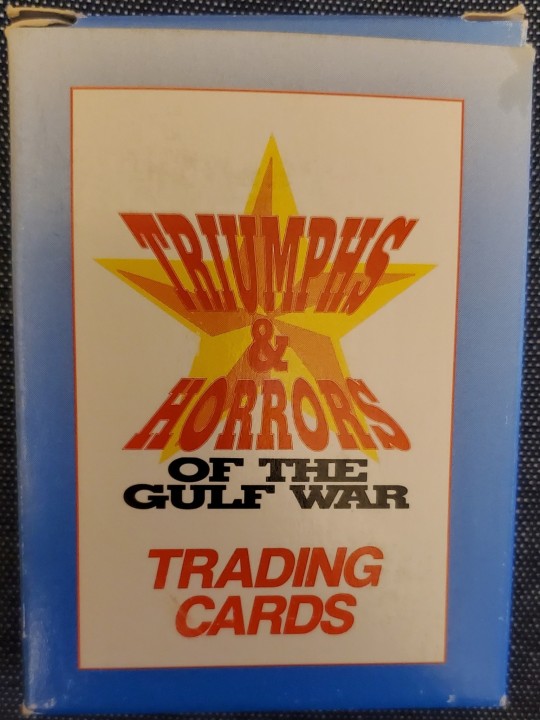

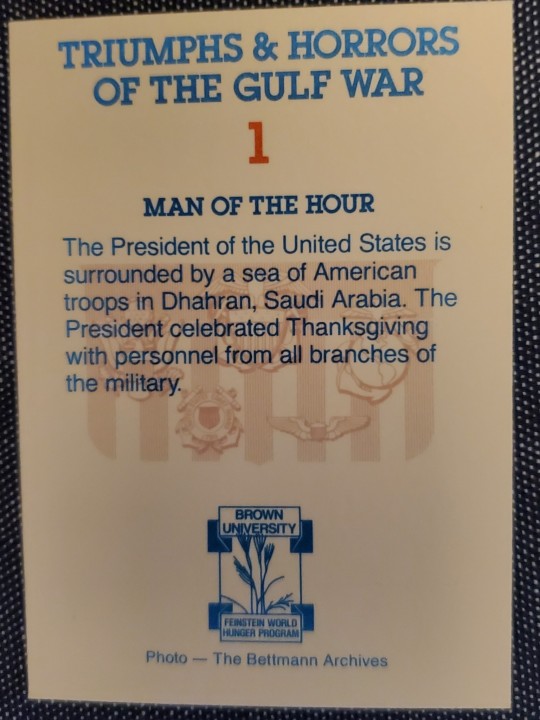

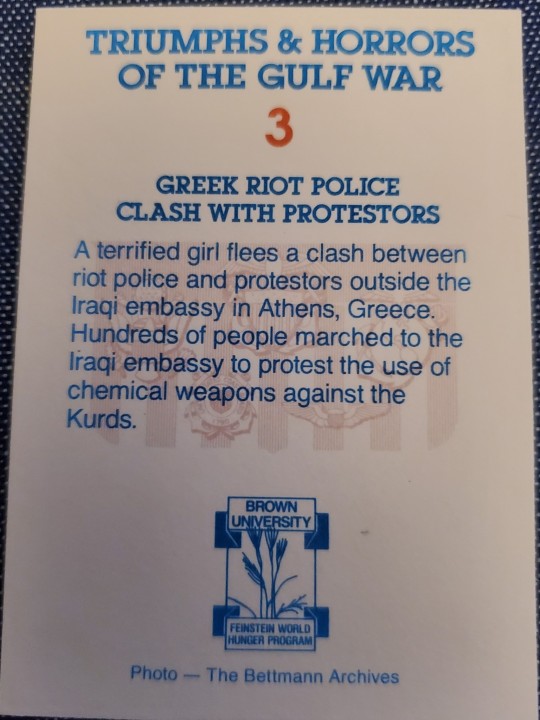

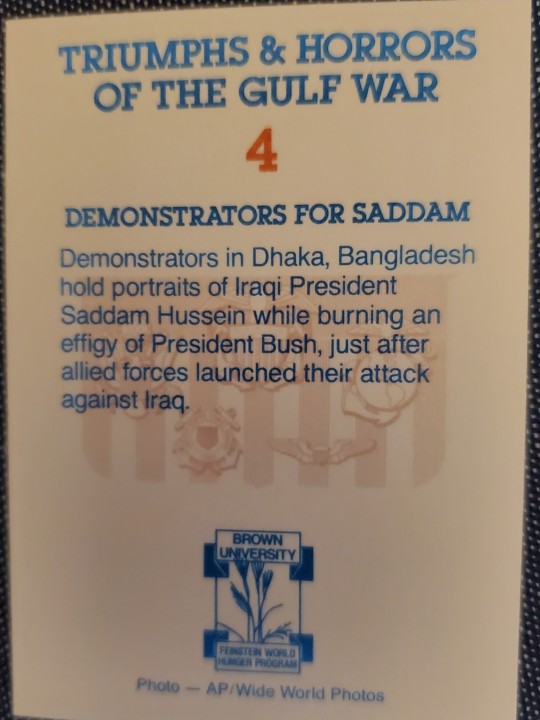
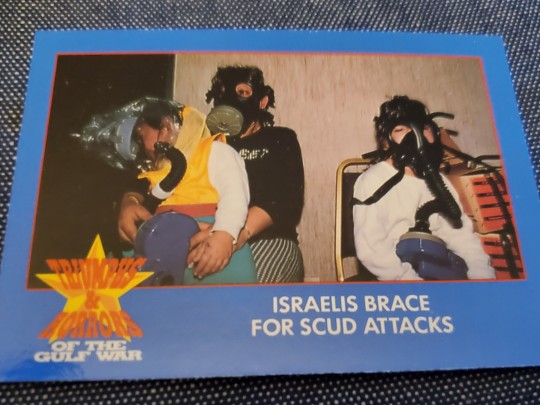

#gulf war#persian gulf#george hw bush#george bush#colin powell#saddam hussein#iraq#kuwait#propaganda
10 notes
·
View notes
Photo

Gulf kids
#hws oc#hetalia oc#bahrain oc#aph bahrain#qatar oc#aph qatar#kuwait oc#aph kuwait#aph middle east#historical#art tag#queued update
29 notes
·
View notes
Text
Colin Powell, first Black US state secretary, dies at 84 due to Covid
Colin Powell, first Black US state secretary, dies at 84 due to Covid
Image Source : AP
Powell, former Joint Chiefs chairman and secretary of state, has died from COVID-19 complications. In an announcement on social media Monday, the family said Powell had been fully vaccinated. He was 84.
Colin Powell, who served Democratic and Republican presidents in war and peace but whose sterling reputation was forever stained when he went before the U.N. and made faulty…

View On WordPress
#colin powell#COVID#george hw bush#george w. bush#joint chiefs of staff#Kuwait#powell#walter reed national medical center#Washington
0 notes
Text
Okay so transcribing this tweet string that explains shit George H. W. Bush did and why we’re celebrating his death.
the original tweet can be found here: https://twitter.com/fighter_pielet/status/1068783088279404544
george hw bush crimes & war crimes thread. mostly so that i can keep track when liberals see and start responding to my tweets. feel free to add your own:
amiriyah shelter bombing: https://twitter.com/aaronjmate/status/1068739058195664896
banning people who were hiv+ from entering the country: https://twitter.com/racheline_m/status/1068749577052921856
Highway of Death, the result of American forces bombing retreating Iraqi forces, Kuwait, 1991: https://rarehistoricalphotos.com/highway-death-in-pictures-1991/
After the warship USS Vincennes shot down an Iranian commercial airliner, killing 290 civilians on July 3, 1988 "I will never apologize for the United States — I don't care what the facts are.... I'm not an apologize-for-America kind of guy." George H. W. Bush: https://www.cnbc.com/2018/12/01/george-hw-bush-quotations.html
sterilization of thousands of native women: https://genderraceclassblog.wordpress.com/reproductive-rights/forced-sterilization-2/native-american-women-targeted-in-1970s/
utter devastation of iraqi infrastructure as well as civilian lives killing 4000 children a month in iraq: : http://www.medialens.org/index.php/alerts/alert-archive/2002/176-iraq-in-the-gunsights.html
Iran-Contra and Black Eagle in Nicaragua: https://www.rollingstone.com/politics/politics-news/the-dirty-secrets-of-george-bush-71927/
opposed the 1964 Civil Rights Act when he was running for Senate in Texas as a Goldwater Republican: https://www.washingtonpost.com/opinions/the-extraordinary-life-and-times-of-george-hw-bush/2018/12/01/4fb34fa6-f4ff-11e8-bc79-68604ed88993_story.html?utm_term=.9e1d86c092c2
there are more but I think this gives you a little idea.
#george h. w. bush#the united states of america#politics#genocide#war crimes#violence#death#murder#imperialism#etc.
690 notes
·
View notes
Text
Marsha Lazareva- A Story of a Russian Entrepreneur in Kuwait
Marsha Lazareva, a Russian citizen and the CEO of KGL Investment in Kuwait is a mother of 5 years old son and a U.S Citizen. She is one of the most hardworking women who is a role model of women leaders across the Middle East.
She holds a degree of B.S in Market Research and Sociology from Moscow State University and also completed her MBA in Finance and Strategic Management from Wharton Schoo, University of Pennsylvania, USA. With her 20 years of experience in several fields like finance, investment banking, private equity, and more in 32 countries, she expertises in emerging markets.
Moving to Kuwait
In 2004, Marsha Lazareva moved to Kuwait. Her first full-time job was with one of the leading business families in Kuwait- The Dashtis. There, she headed Strategic Development for Kuwait & Gulf Link Transport (KGL) Group where she helped the Board of Directors to reorganize the Group through different strategies. KGL also has won billion-dollars contracts to supply food along with other civilian items to the U.S occupation forces in Iraq and other neighboring countries.
KGL Investment Company
Marsha founded the KGL Investment company in late 2006. It is an investment firm that develops and manages private equity funds in developing markets.
However, before joining this company, at AWT/Creditanstalt Baking Group she served as Director of Business Development for Eastern Europe, managing the transactions of more than USD 460 million. Not only this, but she also worked in Cheshire Group Inc, which is a U.S private investment firm as a Managing Director. This firm specializes in real estate, information technology as well as in logistics. Other than the Managing Director and Vice-Chairman of KGL Investment Company, she served as a Director of the Port Fund and KGL Investment Company in Asia and a Vice-Chairman of Petrolink Holding Company.
Shocking Imprisonment Story
Marsha Lazareva, an investment manager was detained in Nov 2017 and faced false allegations of embezzlement of her work. Since then, the case of Marsha Lazareva made high-light in the news everywhere. She and her partner, Mr. Dashti was arbitrarily detained in Kuwait for 470 days.
She was found guilty in May 2018 by Kuwaiti Courts and was sentenced to 10 years of jail along with her partner. On June 5, 2019, she was released on KWD 1 million i.e. $3.3 million bail, whereas, Dashti released on KWD 10 million i.e. $33 million. She has been released on bail after a campaign that features some of the most powerful families in the world including son and brother of former President George HW.
Prisoner Marsha Lazareva was sentenced to 10 years of hard labor in the most notorious prison of Kuwait. She shares her cell with 7 other women. After her bail, she and her young son remain stuck in Kuwait. Because of her detention, she also lost her U.S Green card. When she was unable to return to the U.S to review it, the green card was expired.
1 note
·
View note
Photo
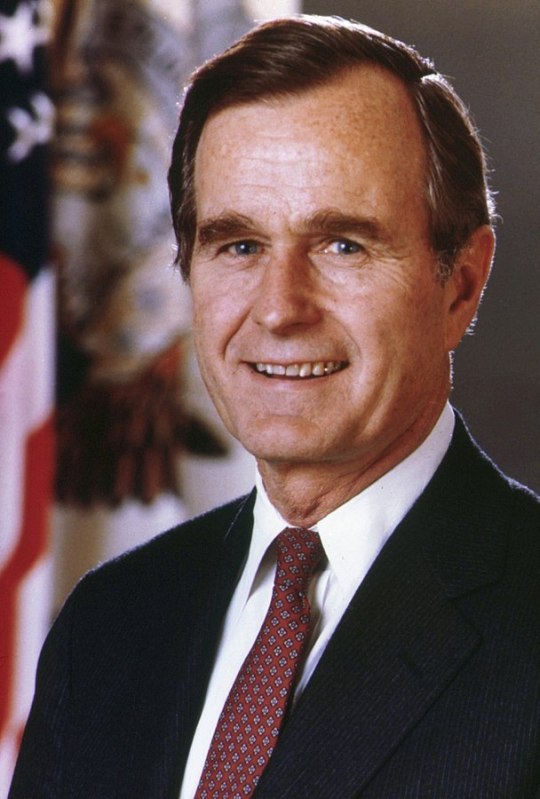
By Department of Defense. Department of the Navy. Naval Photographic Center. (09/18/1947 - ?) - File:George Bush - NARA - 558524.jpg, Public Domain, [source]
George H.W. Bush
War and School
George H.W. Bush was one of those Texans who wasn't born here, but got here as fast he could. He was born in Massachusetts in 1924 to a wealthy family. He enlisted in the Navy as soon as he turned 18, putting off his studies to fight in World War II. He was commissioned as a naval aviator just three days before his 19th birthday, making him the youngest naval aviator to that time. He was discharged in 1945, having been awarded the Distinguished Flying Cross for his service. He married Barbara Pierce shortly before his discharge and the two settled into an apartment in New Haven, Connecticut while he attended Yale University. George W. Bush was born there in 1948, shortly before Bush graduated and the whole family moved to West Texas.
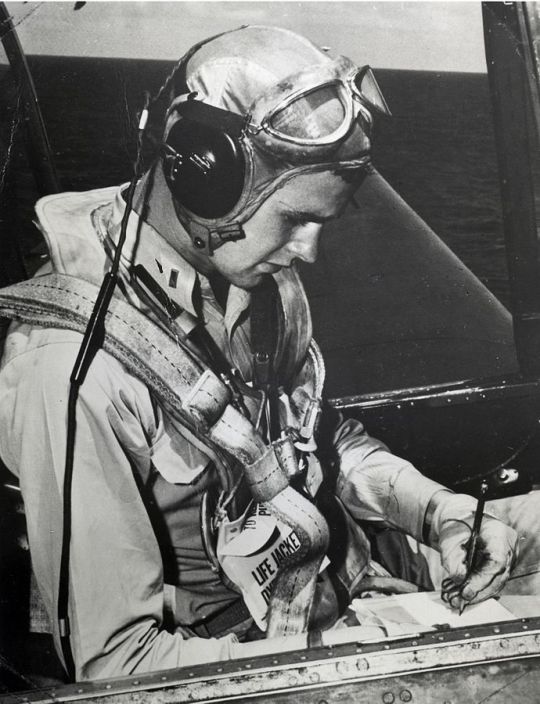
George HW Bush, seated in a Grumman TBM Avenger aircraft, c. 1944. U.S. Navy photo H069-13, Public Domain, [source]
Oil Boom
Bush used his father's business connections to gain a foothold in the oil business. He started as a salesman for oil field equipment, but started his own company a few years later. During this time the young Bush family moved frequently, all over West Texas. Eventually, Bush's company joined with another to create the Zapata Petroleum Company, where Bush would be president of a subsidiary, the Zapata Offshore Company. Bush took the subsidiary independent in 1959. By 1966, when he shifted to politics full time, Bush was a millionaire.
Politics
Bush got into Houston politics in 1963, when he was elected chairman of the Harris County Republican Party. The following year, with much urging from fellow Republicans, Bush ran against sitting Senator Ralph Yarborough and lost, though by a relatively small margin for a state that was still a Democrat stronghold. During the campaign, Bush spoke against President Johnson's Civil Rights legislation, though he later said he regretted the hard line stance he had taken during the campaign and did later vote for Civil Rights bills. He did win the election to the US House of Representatives in 1966, serving two terms. In 1970, Nixon convinced Bush to run against Yarborough for the Senate again, but, once again, Bush lost. Nixon then appointed Bush as ambassador to the UN. After that followed a series of positions, based on the needs of Nixon and later Ford, including chairman of the Republican National Committee, Liaison to China, and head of the CIA. Despite their short terms, these positions helped to ground Bush's foreign policy. In 1976, Carter was elected president and Bush was out of a job.

President Ronald Reagan and Vice President George Bush at the 1984 Republican National Convention in Dallas, Texas August 23, 1984. NARA, Reagan Library, [source]
"Ready My Lips: No New Taxes!"
Bush returned to the business world after Carter's election, but soon turned to running for President. Though he campaigned hard through 1979, he couldn't compete with Ronald Reagan and formally dropped out in May of 1980. In a last minute decision, Reagan picked Bush as his running mate and Bush became the vice president in 1981. Bush spent much of his time outside the US, talking with leaders all over the world, but particularly in the USSR and former Soviet Bloc countries. After Reagan's second term, Bush campaigned for president once again, most notably with the promise "Read My Lips: No New Taxes!" He won the 1988 election in a landslide. Bush excelled with his foreign policy. He continued to improve relations with the Soviet Union and former Soviet bloc countries. His presidency saw the fall of the Berlin wall and the dissolution of the USSR, marking the end of the Cold War, as well as the signing of NAFTA. It also saw the brief Gulf War in 1990, where the US joined with many other countries to liberate Kuwait from an invasion by Iraq. Bush had trouble gaining support for the war at first, but after its end was often criticized for not continuing it until the Iraq government was overthrown. Despite the criticisms, the incident led to an incredible surge in his popularity. It wouldn't last. Reagan had left a large deficit and Bush was forced to work with Democrats to raise taxes to handle it. Breaking his promise of "No New Taxes" hurt him with the public and probably led to his loss of the 1992 election.
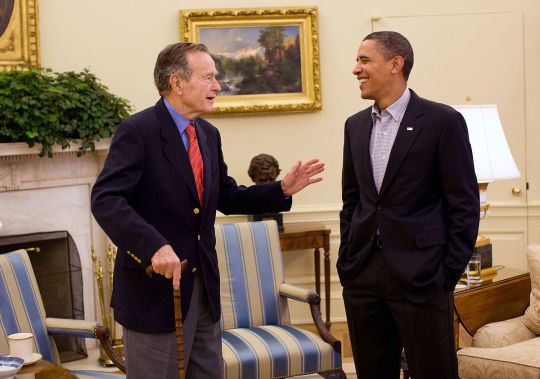
President Barack Obama meets with former President George H.W. Bush in the Oval Office, Saturday, Jan. 30, 2010. Photograph by White House photographer Pete Souza. [source]
"To Make Kinder the Face of the Nation"
The loss of the 1992 election blindsided Bush. Though many signs pointed to his waning popularity, he still felt that he could win up until Election Day. After his defeat, he largely retired from politics, though not necessarily from the public eye. He continued to visit countries to improve relationships that he had helped build. He continued to be involved in causes he had begun as president, such as Points of Light, an organization that recognized ordinary Americans doing great things in their communities. He stayed in the background during his son's presidency and continued to be reserved when it came to politics over the next years, though he did come out in support of the presidential campaigns of John McCain, Mitt Romney, and his son, Jeb Bush. Bush came to be good friends with former president Clinton and showed solidarity with former and current presidents. In the 2016 presidential election, he was an outspoken critic of Trump and said that he had voted for Hillary Clinton, despite saying in 2008 that he would campaign against her vigorously if she ever initiated a presidential bid. Bush suffered from Parkinson's disease, though that didn't keep him from living an active life, including many rounds of golf and sky diving on his 90th birthday. He passed away in December 2018 at the age of 94, and is buried at his presidential library in College Station, Texas, next to his wife Barbara. Many believe that as Reagan's legacy begins to tarnish, Bush will be remembered as one of the most successful one term presidents in US history.
#George HW Bush#bush#us president#texas#president bush#points of light#reagan#nixon#barbara bush#houston#us navy#navy#navy aviator#pilot#Veterans Day#politics#US House of Representatives#liaison#cia#presidential elections#parkinson's disease#clinton#2016 election#college station#bush presidential library#george bush#george bush sr#bush the elder#sky diving#golf
4 notes
·
View notes
Video
youtube
I loved this song in high school, and managed to find a friend who liked it as much when I played it for her (most other kids in the school weren’t so enthusiastic about the more obscure-in-the-US end of my music tastes.) This friend and I decided we would choreograph a dance to this song, so we’d go into her garage after school before her dad got home from work and work on the dance in that space. I loved this song’s optimistic “if we work together, we can do anything” message.
Then, one night after we were done dancing, we walked inside to find my friend’s mom watching the breaking news about G HW Bush’s invasion of Kuwait.
We never went back to working on our choreography.
3 notes
·
View notes
Photo
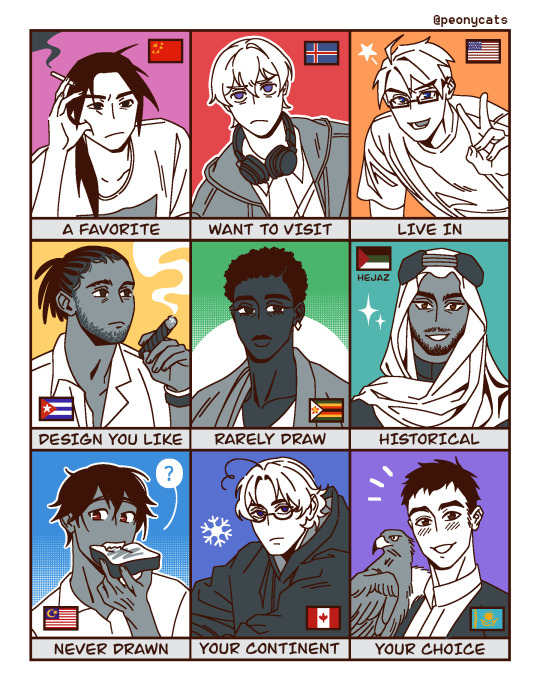

Some recent character batches I did on instagram! Doing these requests were fun, maybe I’ll do them again later :3c
#hetalia#hws china#hws iceland#hws america#hws cuba#hws zimbabwe#hws hejaz#hws malaysia#hws canada#hws kazakhstan#hws philippines#hws kuwait#hws bangladesh#hws mongolia#hws pakistan#hws samoa#hetalia ocs#historically inaccurate hair is historically inaccurate#aph china#aph iceland#aph america#aph cuba#aph zimbabwe#aph malaysia#aph canada#aph hejaz#APH Kazakhstan#aph philippines#aph pakistan#aph samoa
929 notes
·
View notes
Photo

#makingourworldmoreproductive #instapic #instastyle #greenhouse #gases #follow #airtecbh #bmigp #airtec total gas solutions email: [email protected] Whatsapp(24x7) +97333530470 is #alwayspleasedtoserve #bahrain #kuwait #oman #qatar #saudiarabia #uae https://www.instagram.com/p/CE88EHpD-Hw/?igshid=1q44qpk31rz7t
#makingourworldmoreproductive#instapic#instastyle#greenhouse#gases#follow#airtecbh#bmigp#airtec#alwayspleasedtoserve#bahrain#kuwait#oman#qatar#saudiarabia#uae
0 notes
Text
John Major Biography and Profile
New Post has been published on https://www.politicoscope.com/john-major-biography-and-profile/
John Major Biography and Profile

As Prime Minister Sir John Major oversaw Britain’s longest period of continuous economic growth and the beginning of the Northern Ireland Peace Process. John Major was born in 1943 in Carshalton, Surrey, but raised in Brixton. Unlike many Prime Ministers of the 20th century, he did not attend university after leaving school at 16. John Major entered politics at a young age as an active Young Conservative in Brixton and stood as a candidate for Lambeth Council aged only 21, winning the seat and becoming chairman of the Housing Committee. He stood for Parliament twice in 1974 in St Pancras, losing both times before winning Huntingdonshire in 1979.
In 1981 he became a ministerial aide and then a minister himself in 1985. Entering Cabinet in 1987 as Chief Secretary to the Treasury, he won the admiration and respect of his colleagues due to his ability to keep spending down. He was then promoted to Foreign Secretary in 1989 and Chancellor of the Exchequer soon after that. Following Margaret Thatcher, John Major became Prime Minister and attempted to make peace between both party and country in the wake of a divisive decade. He took a leading role, alongside US President George HW Bush, in the first Gulf War, and survived an IRA mortar attack on Number 10 during a Cabinet meeting. He won the 1992 general election, with the Conservatives receiving the highest number of popular votes in history but with a smaller majority of 21, which itself was reduced in by-election defeats during the parliament. This victory was on the back of reversing the unpopular poll tax, Community Charge, which was introduced at the end of the Thatcher government.
After this election, however, his fortunes began to change. Five months into the new parliament, John Major was forced to abandon a leading part of his economic policy: membership of the Exchange Rate Mechanism. Intended to keep inflation low by linking exchange rates to the Deutschmark, the markets forced the UK out after government spent billions trying to buck the market. At the same time a fresh round of conflict began within his own party over Europe. He secured a number of opt-outs from the Maastricht Treaty regarding social policy and membership of the single currency – but this was not enough for a number of his colleagues. Throughout the rest of his time as Prime Minister, he suffered from continued attacks from his own party and Cabinet on Europe, which played a role in destabilising the government
In addition to this, the Major government was the subject of a number of press stories about infidelity and poor moral behaviour both within the Cabinet and wider party. The label of ‘Tory sleaze’ stuck and lost John Major’s government further credibility. The economy picked up after leaving the Exchange Rate Mechanism, and, under John Major, the beginning of Britain’s longest period of continuous economic growth began. He also began work engaging with the IRA to work towards a peaceful end to the conflict in Northern Ireland, his work there leading the way for the Good Friday Agreement in 1998.
Who is Sir John Major Biography and Profile?
Sir John Major was born on 29th March 1943, the son of Tom Ball, known as Tom Major, and Gwen Major. He was educated at Cheam Common Primary School and then Rutlish Grammar School. He left school in 1959, on the day before his sixteenth birthday. Out of school, he continued to study, and qualified as a Banker (AIB).
Sir John was elected a councillor at Lambeth Borough Council in 1968, going on to become Chairman of the Housing Committee. He became the Conservative Parliamentary candidate for the safe Labour seat of St Pancras North for both the General Elections in 1974.
In 1976, Sir John became the Conservative Parliamentary candidate for the constituency of Huntingdonshire, and in 1979 he won in the General Election to become an MP. The constituency was renamed Huntingdon and the boundaries redrawn, and Sir John was to hold this seat comfortably until his retirement from the House of Commons in 2001. He made his maiden speech in the House of Commons on 13th June 1979.
In 1981, Sir John was appointed a Parliamentary Private Secretary and then a junior whip in 1983. He became the Under-Secretary of State in the Department of Health and Social Security in 1985, and then a Minister of State in the same department in the following year.
Following the 1987 General Election, Sir John was promoted to the Cabinet as the Chief Secretary to the Treasury, and appointed a Privy Councillor. He was then promoted to become Foreign Secretary on 24th July 1989, a position he held only until 26th October 1989 when he became the Chancellor of the Exchequer, following the shock resignation of Nigel Lawson. He set out his views in the 1989 Autumn Statement where he focused on the need to keep inflation low, and repeated that priority in the 1990 Autumn Statement, made just days before he was to become Prime Minister.
Following Margaret Thatcher’s resignation following the November 1990 Conservative leadership contest, Sir John became Prime Minister on 28th November 1990. In Sir John’s first Cabinet, Norman Lamont became the Chancellor of the Exchequer, Kenneth Baker became Home Secretary and Douglas Hurd remained as the Foreign Secretary.
Sir John became Prime Minister just after Saddam Hussein had invaded Kuwait, and he worked closely with President George Bush to liberate Kuwait as part of Operation Desert Storm. After the war ended, and Saddam Hussein began to persecute the Kurds, Sir John launched the “Safe Havens” policy, that protected them and saved many thousands of lives. In a joint doorstep interview with the President on 22nd December 1990, he set out the British Government’s position in Iraq. Despite the efforts of the Prime Minister and other world leaders to get Saddam Hussein to leave Kuwait, military action started in mid January 1991, with Sir John making a broadcast to the nation on 17th January 1991.
Sir John pledged to concentrate on keeping inflation low, and started to launch the idea behind the Citizen’s Charter pledging to give power back to individuals, a subject he spoke on in detail at the Economist Conference in January 1992. In the early part of 1991 plans were drawn up to replace the controversial Community Charge “Poll Tax” with the Council Tax.
In December 1991, Sir John negotiated the Maastricht Treaty, but obtained an opt out from the Euro to keep Sterling an independent currency. He also opted out of the Social Chapter.
He also pledged to seek a solution to the troubles in Northern Ireland and launched the Peace Process, working successively with Albert Reynolds and John Bruton as Taoiseach of Ireland. On 15 December 1993, he and Albert Reynolds launched the Downing Street Declaration.
Sir John was a supporter of public services, and spoke widely on education and his vision to widen education to more individuals, speaking on the matter at a speech to the CPS on 3rd July 1991. In his first Conservative Party conference as leader in October 1991, he referred to his commitment to the NHS, saying “it is unthinkable that I, of all people, would try to take that security away”.
Despite adverse opinion polls, Sir John won the General Election on 9th April 1992, with the highest number of votes ever obtained by any political party, over 14 million. Unfortunately, this translated into only a small majority of seats. The 1992 Conservative Party manifesto set out the aims for the next Parliament.
In 1993 the National Lottery Act was passed, with the aim of raising extra money for the arts, sports, millennium and good causes. Sir John saw this as an opportunity to allow investment in areas which often lost out when expenditure was being allocated and spoke on this at the English Heritage Conference in September 1994. Sir John launched the National Lottery in London in November 1994.
In April 1993, at a speech to the Conservative Group for Europe, Sir John was speaking of how Britain would remain unique and distinctive, and his phrase, “fifty years from now Britain will still be the country of long shadows on county grounds, warm beer, invincible green suburbs, dog lovers and pools fillers” has been much quoted.
In June 1994, Sir John vetoed Jean-Luc Dehaene as President of the European Commission, opting instead for the less federalist Jacques Santer. Tony Blair was elected as leader of the Labour Party in July 1994 following the death of John Smith. Shortly after, in early September 1994, Sir John gave a speech at the William and Mary lecture in Leiden putting forward his vision for the future of the European Union.
In September 1994, Sir John visited South Africa to mark the progress made in the country since apartheid. He addressed the South African Parliament with his vision for the country’s future.
In February 1995, the Framework Document on peace in Northern Ireland was published, following the IRA ceasefire in August 1994. In February 1996 an IRA bomb ended the ceasefire, but all-party talks resumed in June 1996, despite a bomb that month in Manchester. The Government published an update on the Prime Minister’s position in November 2006.
In June 1995, Sir John stood down as leader of the Conservative Party, triggering a leadership contest, which he won in the first round.
Sir John’s time in office saw interest rates fall from 14% to 6%, unemployment was down to 1.6 million and inflation remained low. He handed over an economy that had been growing for five years.
Sir John was awarded the Companion of Honour by the Queen in 1999 and he stood down from Parliament in 2001. On St. George’s Day, 2005, Sir John was appointed a Knight Companion of the Most Noble Order of the Garter by HM Queen Elizabeth II.
Sir John Major Biography and Profile (John Major)
#British Politician#British Prime Minister#Conservative Party#John Major#John Major Biography#John Major Biography and Profile#Sir John Major Biography and Profile#UK Politician
0 notes
Photo

Dates!!!
#hws oc#hetalia oc#aph oc#aph middle east#kuwait oc#bahrain oc#aph kuwait#aph bahrain#art tag#food#queued update
20 notes
·
View notes
Text
Group B Streptococci in sushi and sashimi
I have previously posted about a large community Group B Streptococcus (GBS) outbreak in Singapore (Kalimuddin S, 2017).
In that post I alluded to the fact that my original hypothesis was that people were getting GBS by eating raw tilapia in sushi and sashimi as a result of a trade practice known as fish species substitution, where a cheaper fish species is substituted for a more expensive one and given a similar sounding name.

Somewhere on that plate is a serotype Ia ST7 GBS.
The GBS outbreak eventually turned out to be due to serotype III ST283 GBS found in bighead carp, giant snakehead and tilapia. People were getting sick consuming raw fish dishes in local Chinese stalls rather than Japanese-style restaurants.
However the question over whether GBS could be found in sushi and sashimi continued to bother me. I got a chance to study this when 2 students from Temasek Polytechnic were attached to our laboratory in 2015 (Koh TH, 2017). These students were required to do a small project so I set Terry and Fionicca off to purchase sushi and sashimi from the cheaper Japanese-style food outlets and supermarkets dotted across Singapore. At the end of the day we collected 17 fish samples sold ready-to-eat. Twelve samples were salmon, 4 were sold as ‘Tai’, and one was actually sold as tilapia. The fish were processed according the method detailed in a previous post.
We isolated 2 GBS. One was serotype II ST1 GBS resistant to tetracycline from a Salmon sample. The other was serotype Ia ST7 GBS susceptible to tetracycline from the tilapia sample. We were also able to find molecular evidence for serotype Ia ST7 GBS in a sample sold as ‘Tai’ even though we were unable to isolate the organism in culture. We did not find any serotype III ST283 GBS though this may be a limitation of the small sample size.
Besides serotype III ST283 GBS, there are two other types of GBS that are important fish pathogens, serotype Ib ST260 and serotype Ia ST7.
Serotype Ib ST260 (originally named Streptococcus difficile) is the original GBS pathogen of fish that was described as early as 1966. They are characteristically non-haemolytic. This type affects many species of fish and is widely distributed. However, there is some data to suggest that this GBS type is not found in Singapore, Malaysia, and Thailand, but may be found in Indonesia. When I first started looking out for zoonotic GBS infections in 2008, I was focused on serotype Ib ST260. In retrospect this was probably a mistake. This type is so niche-adapted that it has a reduced genome content, and so far has only been found in poikilothermic (cold blooded) animals like fish and frogs (Delannoy CMJ, 2016). It has never been described in humans and probably poses no zoonotic risk.
The origins of serotype Ia ST7 GBS are less certain. This type has caused human infections in neonates in Japan (Evans JJ, 2008), and adults in Iceland (Bjornsdotir ES, 2016), but on the whole is rarely found in humans (note both Japan and Iceland have populations known for high fish consumption). On the other hand, serotype Ia ST7 GBS have caused many outbreaks in fish, especially tilapia, in asia and the middle east. This type has also recently caused an outbreak locally in Singapore among farmed golden pomfret (Trachinotus blochii) (Chong SM, 2017). Interestingly in that manuscript, the authors say that GBS had not been detected in cultured marine and freshwater fish in Singapore prior to 2014. To confuse matters, an old American type culture collection strain of GBS (ATCC A909) was recently found to be serotype Ia ST7 (Tettelin H, 2005). This was isolated from a human neonate with sepsis in 1934! The genome of ATCC A909 was recently compared with that of serotype Ia ST7 GBS isolated from tilapia in China and found to be similar (Liu G, 2013).
So is serotype Ia ST7 GBS a zoonosis or do fish get infected as a result of human effluent polluting the environment? Delannoy et al suggest that serotype Ia ST7 and serotype III ST283 GBS that cause fish infections probably have a primarily homeothermic (warm blooded) host range and have acquired fish-associated virulence factors not usually found in human or bovine isolates (Delannoy CMJ, 2016). So perhaps an anthroponosis first then a zoonosis later?
What of the serotype II ST1 GBS resistant to tetracycline from Salmon? We think this was probably the result of human contamination of fish (human clones of GBS tend to be tetracycline resistant whereas fish isolates tend to be tetracycline susceptible).
Going back to the issue of fish species substitution and mis-labelling of fish. This is a widespread practice in the fish trade. Customers may not know the subtle difference between dory fish (Vietnamese catfish Pangasius spp. ) and the rather more prized John Dory (Zeus faber).
A butterfish (Escolar, Lepidocybium flavobrunneum) in Singapore is not the same as a butterfish in South Australia (Mulloway, Argyrosomus japonicas). It is important to know the difference! As a cautionary tale I refer you to a blogpost by MIPHIDIC.
One of the more interesting parts of our study was trying to identify the actual fish species that was being sold as ‘Tai’ which most people would probably assume was the fish you normally see on ‘Japan Hour’* which is the Red Sea Bream (Pagrus major).
We did this by a method known as fish barcoding. This involved sequencing the cytochrome c oxidase subunit I gene of the fish meat and submitting the sequences to the Fish-Bol database.
Of the 4 ‘Tai’ samples, 2 were indeed Red Sea Bream (Pagrus major), 1 was Crimson Snapper (Lutjanus erythropterus), this was the sample that had molecular evidence for serotype Ia, ST7 GBS. The other sample was a Nile tilapia (Oreochromis niloticus). So if you want to be sure of what fish you are eating, order the whole fish or go to a reputable restaurant (and be prepared to pay more).
*A popular TV programme in Singapore featuring travel and food in Japan.
Kalimuddin S, Chen SL, Lim CTK, Koh TH, Tan TY, Kam M, Wong CW, Mehershahi KS, Chau ML, Ng LC, Tang WY, Badaruddin H, Teo J, Apisarnthanarak A, Suwantarat N, Ip M, Holden MTG, Hsu LY, Barkham T; Singapore Group B Streptococcus Consortium. 2015 Epidemic of Severe Streptococcus agalactiae Sequence Type 283 Infections in Singapore Associated With the Consumption of Raw Freshwater Fish: A Detailed Analysis of Clinical, Epidemiological, and Bacterial Sequencing Data. Clin Infect Dis. 2017 May 15;64(suppl_2):S145-S152. (no free access)
Koh TH, Cao DY, Khoo BC, Ong LH, Teo F, Tan TW. Group B Streptococci in Sushi and Sashimi. Ann Acad Med Singapore. 2017 Feb;46(2):74-75. (free access)
Delannoy CM, Zadoks RN, Crumlish M, Rodgers D, Lainson FA, Ferguson HW, Turnbull J, Fontaine MC. Genomic comparison of virulent and non-virulent Streptococcus agalactiae in fish. J Fish Dis. 2016 Jan;39(1):13-29. (no free access)
Evans JJ, Bohnsack JF, Klesius PH, Whiting AA, Garcia JC, Shoemaker CA, Takahashi S. Phylogenetic relationships among Streptococcus agalactiae isolated from piscine, dolphin, bovine and human sources: a dolphin and piscine lineage associated with a fish epidemic in Kuwait is also associated with human neonatal infections in Japan. J Med Microbiol. 2008 Nov;57(Pt 11):1369-76. (free access)
Björnsdóttir ES, Martins ER, Erlendsdóttir H, Haraldsson G, Melo-Cristino J, Kristinsson KG, Ramirez M. Changing epidemiology of group B streptococcal infections among adults in Iceland: 1975-2014. Clin Microbiol Infect. 2016 Apr;22(4):379.e9-379.e16. (free access)
Chong SM, Wong WK, Lee WY, Tan ZB, Tay YH, Teo XH, Chee LD, Fernandez CJ.Streptococcus agalactiae outbreaks in cultured golden pomfret Trachinotus blochii (Lacépède), in Singapore. J Fish Dis. 2017 Jul;40(7):971-974. (no free access)
Tettelin H, Masignani V, Cieslewicz MJ, Donati C, Medini D, Ward NL, Angiuoli SV, Crabtree J, Jones AL, Durkin AS, Deboy RT, Davidsen TM, Mora M, Scarselli M, Margarit y Ros I, Peterson JD, Hauser CR, Sundaram JP, Nelson WC, Madupu R, Brinkac LM, Dodson RJ, Rosovitz MJ, Sullivan SA, Daugherty SC, Haft DH, Selengut J, Gwinn ML, Zhou L, Zafar N, Khouri H, Radune D, Dimitrov G, Watkins K, O'Connor KJ, Smith S, Utterback TR, White O, Rubens CE, Grandi G, Madoff LC, Kasper DL, Telford JL, Wessels MR, Rappuoli R, Fraser CM. Genome analysis of multiple pathogenic isolates of Streptococcus agalactiae: implications for the microbial "pan-genome". Proc Natl Acad Sci U S A. 2005 Sep 27;102(39):13950-5. (free access)
Liu G, Zhang W, Lu C. Comparative genomics analysis of Streptococcusagalactiae reveals that isolates from cultured tilapia in China are closelyrelated to the human strain A909. BMC Genomics. 2013 Nov 11;14:775. (free access)
3 notes
·
View notes
Text
AJENews (December 01, 2018 at 08:00AM)
George HW Bush: He successfully reversed Saddam Hussein's invasion of Kuwait, prompting an era of US military adventurism in the Middle East https://t.co/B2pGRYDPOq https://t.co/sMbWWEFrGo - From Twitter
0 notes
Text
For some reason, I can’t reblag this post, so:
@electoralcollege
“The Third Geneva Convention lays out the mandatory treatment of enemy soldiers who are hors de combat, that is to say, not in combat. Whether retreating soldiers qualify for that label has been debated but the Convention’s definition would tend to imply that they do. Soldiers who are hors de combat, under the Convention, are to be “in all circumstances… treated humanely.” The Convention prohibits “outrages upon personal dignity… humiliating and degrading treatment,” under which shooting them with bullets, rockets, and mortar shells, as happened in the Highway of Death, obviously qualifies. The Convention also says you’re not allowed to shoot soldiers who have laid down their weapons, as also happened in the Highway of Death. You’re also not allowed to deliberately kill civilians or hostages, again, as happened in the Highway of Death.
That the Highway of Death was a war crime is not really up for debate, as it was considered as much by American military leadership at the time. It was considered too much by American standards. Then- JCS chairman Colin Powell was sickened by the carnage, bemoaning it as “slaughter for slaughter’s sake,” and the graphic, vicious images broadcast from Kuwait were highly influential in President George HW Bush’s decision to end hostilities the next day.
It’s worth noting that the Iraqi forces were not just making a strategic withdrawal from Kuwait City to regroup and continue to prosecute the (already lost) war. They were withdrawing in compliance with UNSC resolution 660, which passed immediately following Iraq’s invasion of Kuwait and compelled them to withdraw to their pre-August 1990 borders. There was no military justification or necessity for the United States to fire upon Iraqi forces. It was a brutal, monstrous war crime.”
Editorial comment from @arbane: Fortunately for the Americans, the only war crime that matters is losing.
0 notes